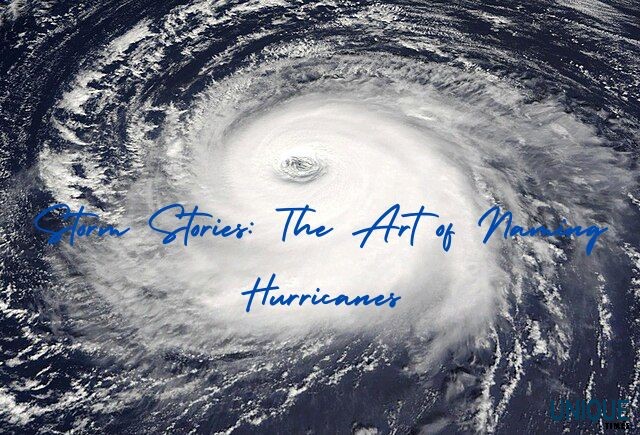Behind the Names: The Intriguing Process of Naming Storms and Hurricanes

Storms and hurricanes, powerful forces of nature, often carry names that resonate with their impact. In this blog, we’ll unravel the fascinating process of naming these meteorological phenomena and explore the history, significance, and the human touch behind the chosen names.
1. The Beginnings: A Brief History of Naming Storms
Naming storms and hurricanes is a practice that dates back centuries. In the past, storms were often named based on their location or the day they occurred. However, this led to confusion and made it challenging to communicate about different storms simultaneously. The need for a standardized naming system became evident, giving rise to the practice we have today.
2. The Birth of Formal Naming: World Meteorological Organization (WMO)
The responsibility for naming storms and hurricanes falls under the purview of the World Meteorological Organization (WMO). The WMO maintains rotating lists of names for different regions across the globe. The names are typically chosen based on languages common to the region to ensure ease of communication and recognition.
3. An Alphabetical Affair: How Names Are Selected
Storm names are selected from predetermined lists that rotate every few years. The lists include names submitted by countries within the designated region. The names chosen are often reflective of the cultural diversity of the region, and they alternate between male and female names. If a storm is particularly deadly or costly, its name may be retired to avoid confusion and ensure sensitivity.
4. The Atlantic and Eastern North Pacific: Dual Naming Systems
The Atlantic and Eastern North Pacific have separate lists for storm names. While both lists are established by the WMO, they cater to different regions. If the predetermined list is exhausted in a given year due to an exceptionally active season, additional storms may be named using the Greek alphabet.
5. Human Touch: Connecting People to the Phenomena
Naming storms and hurricanes serves a practical purpose beyond organization and communication. It adds a human touch to the often ominous and unpredictable forces of nature. Names make it easier for the public to follow and understand weather reports, fostering a sense of awareness and preparedness.
Conclusion: From Tradition to Technological Aid
Naming storms and hurricanes has evolved from a tradition rooted in regional languages to a global system facilitated by technology and meteorological organizations. The process not only aids in effective communication but also humanizes these powerful natural occurrences. As we track storms and hurricanes, understanding the thought and consideration that goes into their names adds a layer of connection to the forces that shape our weather patterns.
Picture Courtesy: Google/images are subject to copyright








